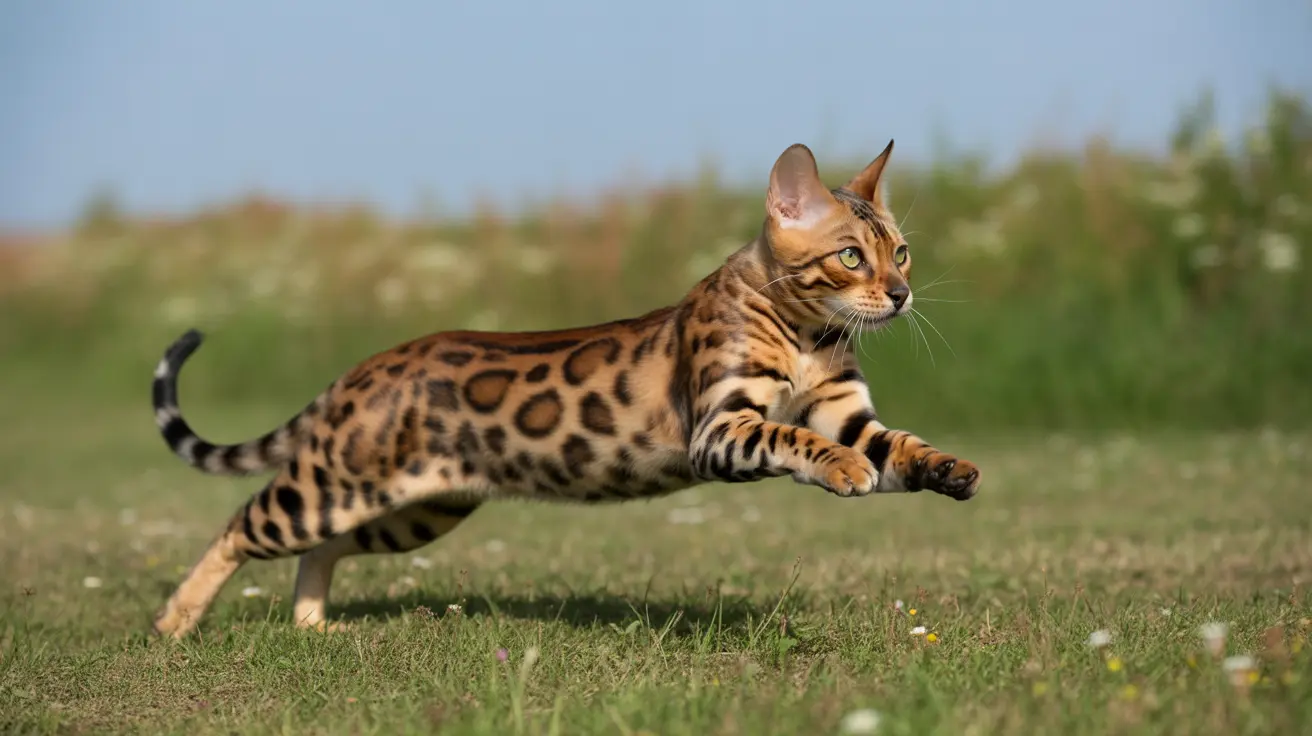When it comes to comparing the athletic abilities of our favorite pets, one question frequently arises: are cats faster than dogs? The answer isn't as straightforward as you might think, as it depends on various factors including breed, distance, and type of movement.
In this comprehensive guide, we'll explore the speed capabilities of both cats and dogs, examining their unique physical adaptations, comparing their performance across different scenarios, and understanding what makes each species excel in their own way.
Understanding Natural Speed Capabilities
Domestic cats typically reach impressive speeds of up to 30 miles per hour in short bursts. This remarkable acceleration comes from their unique physical build, including powerful hind legs and a flexible spine that allows for maximum thrust during sprinting.
Dogs, on the other hand, show much more variation in their speed capabilities. While the average dog runs between 15-20 mph, specialized breeds like Greyhounds can reach astonishing speeds of up to 45 mph, surpassing their feline counterparts.
Physical Adaptations for Speed
Feline Advantages
Cats possess several physical adaptations that make them excellent sprinters:
- Flexible spine for increased stride length
- Retractable claws for better traction
- Lightweight, muscular build
- Powerful back legs for explosive acceleration
Canine Advantages
Dogs have evolved different adaptations based on their breeding purpose:
- Longer legs in racing breeds
- Enhanced cardiovascular endurance
- Varied muscle mass distribution
- Specialized paw pads for sustained running
Sprint vs. Endurance
While cats generally excel in short-distance sprints, dogs often have the upper hand in endurance running. Most domestic cats can maintain their top speed for only about 50-100 yards, while many dog breeds can run for miles at a steady pace.
This difference stems from their evolutionary histories: cats evolved as ambush predators, while many dogs developed as pursuit predators or working animals requiring stamina.
Fastest Dog Breeds vs. Average Cats
Several dog breeds can outpace the average house cat:
- Greyhound (45 mph)
- Saluki (42 mph)
- Afghan Hound (40 mph)
- Vizsla (35 mph)
- Jack Russell Terrier (30-38 mph)
Environmental Factors and Performance
Speed performance in both cats and dogs can be significantly affected by:
- Surface type and terrain
- Weather conditions
- Age and fitness level
- Motivation and purpose
- Health status
Safety Considerations for Pet Owners
Understanding your pet's speed capabilities is crucial for safety. For cat owners, this means securing outdoor spaces and being mindful of escape risks. Dog owners should consider their breed's exercise needs and provide appropriate outlets for their energy.
Frequently Asked Questions
Are domestic cats generally faster than most dog breeds in short sprints?
Yes, the average domestic cat can outrun most dog breeds in short sprints, reaching speeds of up to 30 mph. However, specialized racing dog breeds like Greyhounds can achieve higher top speeds.
Which dog breeds can run faster than a typical house cat, and how fast are they?
Greyhounds (45 mph), Salukis (42 mph), and Afghan Hounds (40 mph) can all outrun the typical house cat's top speed of 30 mph. These breeds were specifically developed for speed and hunting.
What physical traits make cats faster sprinters compared to dogs?
Cats have flexible spines, powerful back legs, retractable claws for better traction, and lightweight, muscular builds that allow for explosive acceleration and agility in short sprints.
How do cats and dogs differ in endurance versus sprinting ability?
Cats excel at short, explosive sprints but tire quickly, while dogs generally have better endurance and can maintain moderate speeds for longer distances, especially breeds bred for hunting or working purposes.
Can indoor cats escape quickly due to their top speed, and what safety measures should owners consider?
Yes, indoor cats can escape very quickly due to their impressive sprint speed. Owners should ensure all windows have secure screens, be careful when opening doors, and consider creating a safe outdoor enclosure if desired.
Conclusion
While cats generally outperform average dogs in short sprints, specialized dog breeds can achieve higher top speeds. Each species has evolved unique adaptations that serve their natural purposes – cats as agile sprinters and many dogs as endurance runners. Understanding these differences helps pet owners better care for their animals and provide appropriate exercise opportunities.






